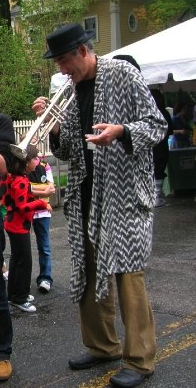How much a listener is distracted by intonation in jazz is personal, but it's clear that in the hierarchy of jazz values, personal expression trumps intonation. In fact, a lot of great players have existed in a kind of a tuning nether-region. I don't mean "bending" notes, which is an obvious device. But, is the musician purposely playing out of tune, doesn't notice it, or is he or she hearing the music in another way; possibly more as in a non-tempered, just-intonation framework?
This varies from instrument to instrument.
Bass players will be pissed off, but I find their intonation often dubious. Walking-ok, but once the solos start and they're freed from the shackles of playing important chord tones, it's a different story. Can't really talk about pianists, of course, as they do what they can with what they're given. As far as trumpet players- look at pictures of classical trumpet players and you see they have

fingers in both the first and third valve slides, in order to make adjustments. Not so, jazz players, who are often out of tune, especially when they use mutes. I hear trombonists adjusting well, especially in the upper register, when the slide is least extended. Mutes are an issue for them, too.
Really, it's about sax players-and mostly about alto players.
There's a school of alto players to which applying the usual standards of playing sharp or flat just doesn't make sense.
Here's where some of them fall to me:
Cannonball Adderly: bright tone, pleasantly sharp.
Gary Bartz: pretty much in the center
Benny Carter: liked to push it up and down, but settled at home
Johnny Hodges: all over the place, but he knew where he was
Ornette Coleman: an intonation enigma; where will he be?
Lou Donaldson: moderately bright tone, but, surprisingly, sometimes a shade under pitch(!)
Eric Dolphy: often far away from "in tune" on the sharp end.
Charlie Parker: His tone changed (almost) everyone's tone to the edgier bright sound that has dominated since that time. I think that people must have heard him as playing sharp, which a lot of the time he was, but less sharp than his tone would lead you to think.
Jackie McLean: He's the guy that inspired this post; pushes sharp to the extreme.
Where do you stand on this question?




















